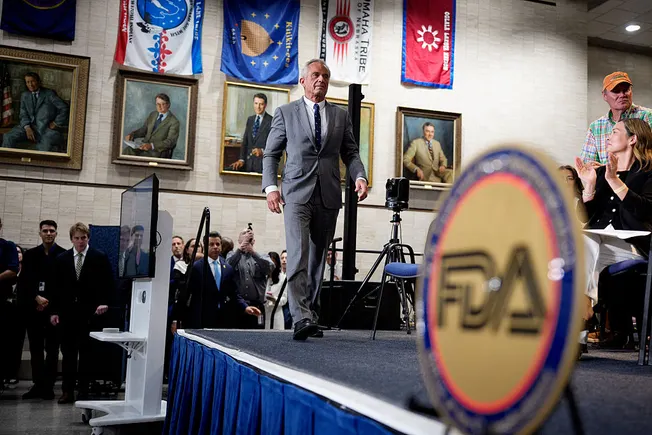The Food and Drug Administration (FDA) has recently made an agreement with the food industry to phase out petroleum-based artificial dyes commonly found in a variety of products such as sports drinks, yogurt, candy, and fruit snacks. The plan involves the voluntary removal of six synthetic dyes by the end of the next year. These dyes include Green No. 3, Red No. 40, Yellow No. 5, Yellow No. 6, Blue No. 1, and Blue No. 2. The FDA is also urging food companies to eliminate Red No. 3 before the 2027 deadline.
In addition to discontinuing synthetic dyes, the FDA will also be revoking authorization for Citrus Red No. 2 and Orange B in the coming months. The agency aims to promote the use of natural alternatives in food products and is expediting the approval process for at least four natural color additives in the near future.
The decision to phase out petroleum-based dyes comes as a response to growing concerns over the health effects of artificial food colorings. Critics argue that these dyes can contribute to behavioral issues in children, increase the risk of cancer, and encourage overeating due to their bright and appealing colors. In Europe, products containing these dyes are required to carry warning labels indicating potential adverse effects on children’s behavior and attention.
While the FDA’s announcement has been praised for taking steps towards eliminating artificial dyes, some critics feel that more decisive action is needed. Dr. Peter G. Lurie from the Center for Science in the Public Interest expressed disappointment in the reliance on voluntary commitments from the food industry, citing past instances where voluntary compliance has fallen short.
The move to phase out synthetic dyes aligns with efforts at the state level to restrict artificial colors in food products. West Virginia recently passed a law limiting seven artificial dyes in foods sold within the state, with other states considering similar measures. Consumer pressure has also played a role, with companies like WK Kellogg Co facing demands to remove dyes from popular products.
Despite the challenges associated with transitioning away from artificial colors, food companies are expected to comply with the FDA’s policy. Industry associations, such as the International Dairy Foods Association and the National Confectioners Association, have expressed their commitment to phasing out artificial dyes in their products.
While the transition to natural alternatives may pose challenges for the food industry, the FDA’s decision reflects a growing concern for consumer health and safety. By moving away from synthetic dyes, food companies are taking steps towards providing healthier options for consumers.

